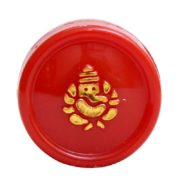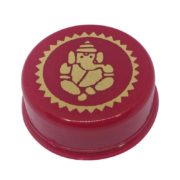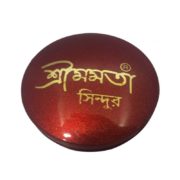Malaysia, with its tropical climate, often experiences high temperatures and humidity, especially during heat waves. Heatstroke, a severe heat-related illness, can be life-threatening if not managed promptly. It is crucial for residents and visitors in Malaysia to take preventive measures to avoid heatstroke. This article provides comprehensive guidelines on how to prevent heatstroke during heat wave in Malaysia.
Understanding Heatstroke
Heatstroke occurs when the body overheats and fails to cool down effectively. It is characterized by a body temperature above 40°C (104°F) and is often accompanied by symptoms such as confusion, loss of consciousness, hot and dry skin, rapid heartbeat, and lack of sweating despite the heat. Immediate medical attention is necessary, as heatstroke can cause damage to vital organs and even death.
Preventive Measures
- Stay Hydrated
Adequate hydration is the first line of defense against heatstroke. The human body relies on sweating to cool down, and this process depletes fluids and electrolytes. To maintain optimal hydration levels:
– Drink Plenty of Water: Aim for at least 8-10 glasses of water per day. During a heat wave, this amount should increase. Carry a water bottle with you and sip regularly.
– Avoid Dehydrating Beverages: Limit consumption of alcohol, caffeine, and sugary drinks as they can lead to dehydration.
– Consume Hydrating Foods: Eat fruits and vegetables with high water content, such as watermelon, cucumbers, oranges, and strawberries.
2. Wear Appropriate Clothing
Clothing choices can significantly impact body temperature regulation:
– Light and Loose-Fitting Clothes: Wear lightweight, loose-fitting, and light-colored clothing. Dark colors absorb more heat, while tight clothes restrict airflow.
– Protective Accessories: Use hats, sunglasses, and umbrellas to shield yourself from direct sunlight. Wide-brimmed hats provide better protection for your face and neck.
3. Limit Outdoor Activities
During a heat wave, it’s wise to reduce exposure to the sun, especially during peak hours:
– Stay Indoors During Peak Heat: The sun is typically strongest between 10 a.m. and 4 p.m. Schedule outdoor activities in the early morning or late evening when temperatures are cooler.
– Seek Shade: If you must be outside, stay in shaded areas as much as possible. Parks with abundant trees or canopies are ideal.
4. Use Cooling Techniques
Keeping your body cool is essential to prevent heatstroke:
– Cold Showers and Baths: Taking a cold shower or bath can help lower your body temperature.
– Cool Compresses: Apply cold, damp cloths to pulse points such as wrists, neck, and temples.
– Fans and Air Conditioning: Use fans and air conditioning to maintain a cool indoor environment. If you don’t have air conditioning, spend time in air-conditioned public places like shopping malls or libraries.
5. Modify Diet and Lifestyle
Certain dietary and lifestyle adjustments can help mitigate the risks associated with heat waves:
– Eat Light Meals: Heavy meals can increase metabolic heat production. Opt for lighter, more frequent meals.
– Avoid Strenuous Activities: Postpone intense physical activities such as exercise and heavy lifting. If unavoidable, take frequent breaks and stay hydrated.
6. Recognize and Respond to Early Symptoms
Early recognition of heat-related symptoms can prevent heatstroke from progressing:
– Monitor for Symptoms: Be aware of signs like excessive sweating, fatigue, dizziness, and muscle cramps. These can be early indicators of heat exhaustion, which can precede heatstroke.
– Immediate Response: If you or someone else shows symptoms of heat exhaustion, move to a cooler place, drink water, and rest. Seek medical attention if symptoms worsen or do not improve.
7. Community and Family Support
Community and familial support play a vital role in preventing heatstroke:
– Check on Vulnerable Individuals: Elderly people, young children, and those with pre-existing medical conditions are more susceptible to heatstroke. Regularly check on them to ensure they are coping well with the heat.
– Spread Awareness: Educate your family and community about the dangers of heatstroke and the importance of preventive measures.
8. Use Technology
Modern technology can assist in heatstroke prevention:
– Weather Apps: Use weather apps to stay informed about temperature forecasts and heat wave warnings.
– Hydration Reminders: Apps and wearable devices can remind you to drink water regularly.
– Emergency Alerts: Sign up for emergency alerts from local health departments to stay updated on heat wave advisories.
9. Plan and Prepare
Being proactive can make a significant difference:
– Emergency Plan: Have an emergency plan in place for heatwaves, including knowing the location of the nearest air-conditioned shelters.
– Supply Kit: Keep a kit with essential items such as water, electrolyte solutions, cooling packs, and a first-aid kit.
10. Adapt Your Environment
Creating a cooler living space helps mitigate the effects of extreme heat:
– Use Blinds and Curtains: Close blinds and curtains during the hottest parts of the day to block out heat.
– Ventilation: Ensure good ventilation in your home. Use fans to circulate air and consider installing air conditioning if possible.
– Landscaping: Plant trees or install awnings to provide natural shade around your home.
Conclusion
Heatstroke is a serious health risk during heat waves, but with proper precautions, it can be prevented. Staying hydrated, dressing appropriately, avoiding peak sun hours, using cooling techniques, modifying diet and lifestyle, recognizing early symptoms, leveraging community support, using technology, planning ahead, and adapting your environment are all essential steps. By taking these measures, residents and visitors in Malaysia can protect themselves from the dangers of heatstroke and enjoy the beauty of this tropical paradise safely.




